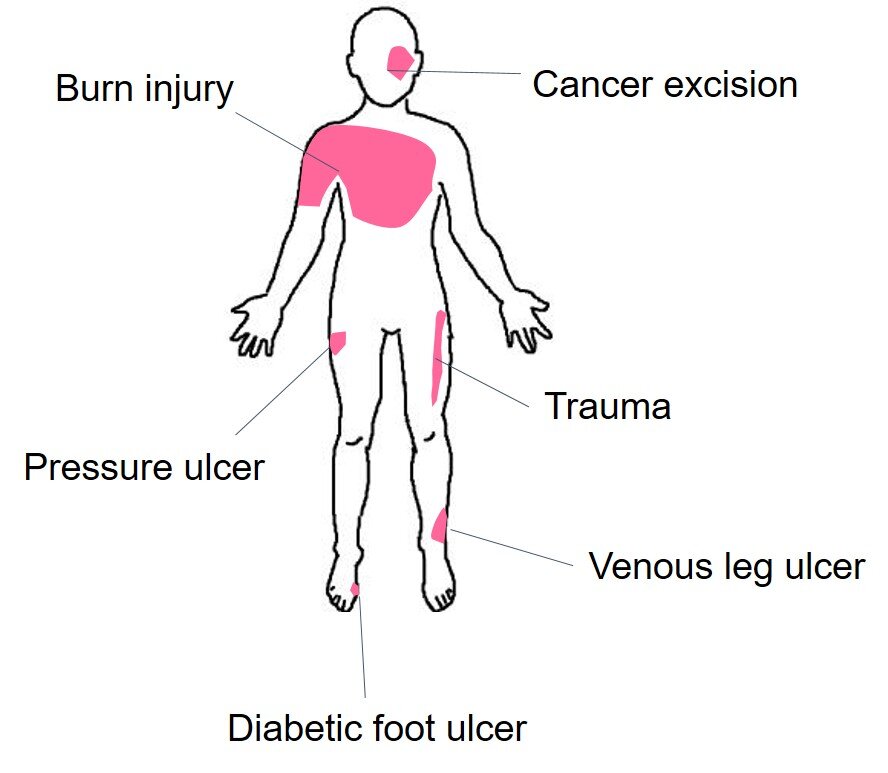SKIN-LOSS WOUNDS
Full-thickness skin-loss wounds
Millions of people suffer from wounds (acute or chronic) year on year.
Acute wounds are caused by burns & trauma, surgical wounds from tumour
excision, and by reconstruction of congenital defects.Chronic wounds arise from ulceration and conditions such as diabetes &
cardiovascular diseases.The resultant scarring with loss of function and aesthetic appearance is permanent.
The most common types of skin-loss wounds.
Skin loss injuries can be life-threatening, will need hospital treatment and have life-long impact. Essentially there are two outcomes, scar formation or ulceration. The body’s response heals the wound by forming scar tissue, but when this fails, the exposed wound becomes a chronic ulcer.
In Europe, there are around 4.5 million patients with full thickness skin wounds every year, a number which is increasing at a rate of around 11% per year (Posnett, 2015). These levels of incidence are similar in the developed economies around the world, and greater still in lower and middle income countries.
Plastic surgeons use skin grafts where possible for best reconstructive outcomes, but main limitations are (i) skin transplanted from a donor site creates another wound, (ii) there is not enough donor site for large-area wounds. Therefore synthetic scaffolds are required for challenging clinical situations (Brusselaers, 2010).
References
Posnett, J. (2015). The burden of wounds on EU healthcare systems, Eucomed Advanced Wound Care Systems Group & EWMA.
Brusselaers, N., A. Pirayesh, H. Hoeksema, C. D. Richters, J. Verbelen, H. Beele, S. I. Blot and S. Monstrey (2010). "Skin replacement in burn wounds." J Trauma 68(2): 490-501.


